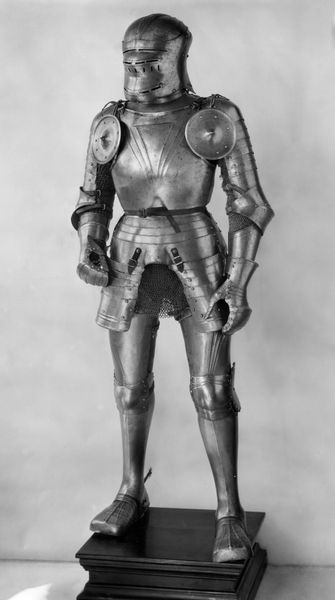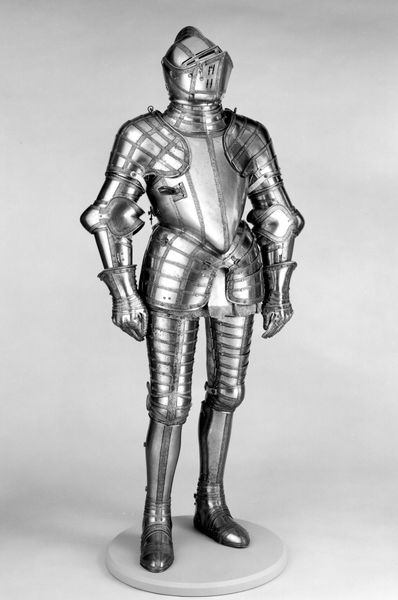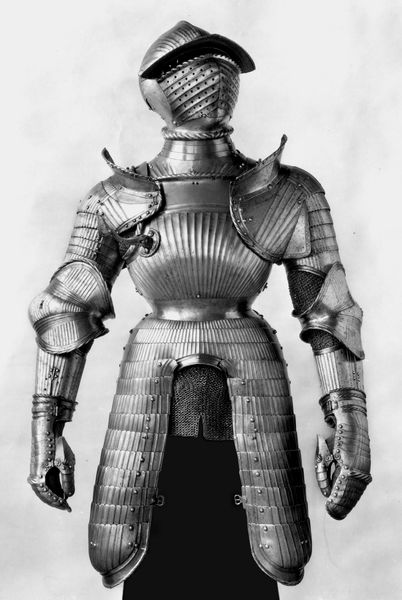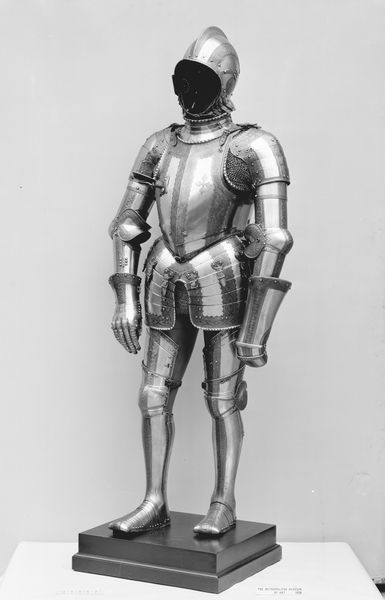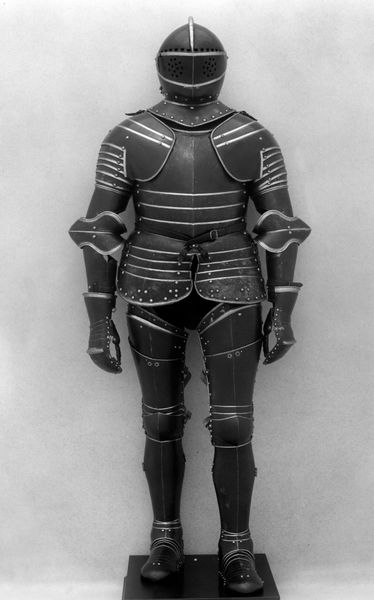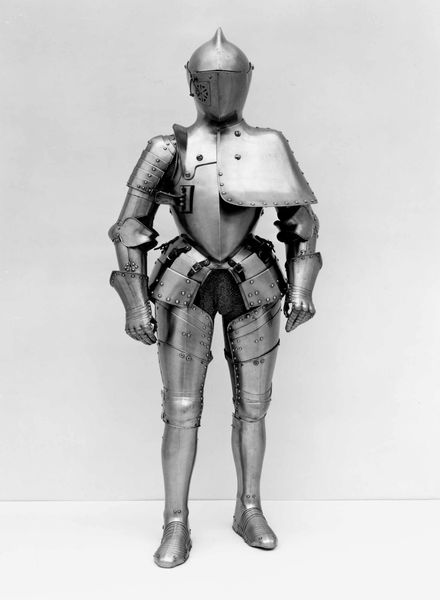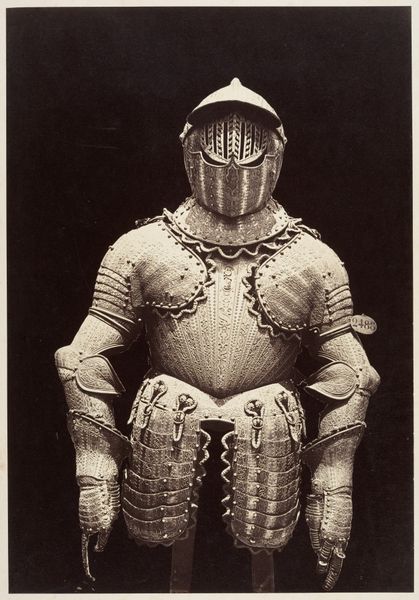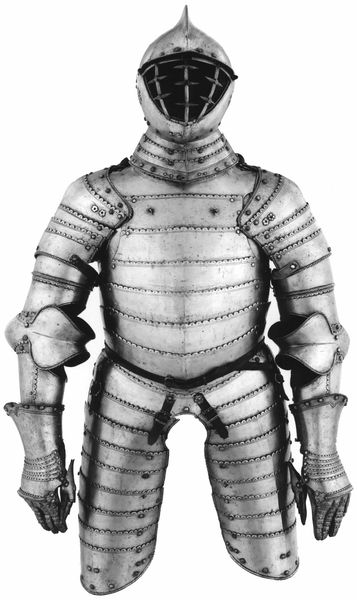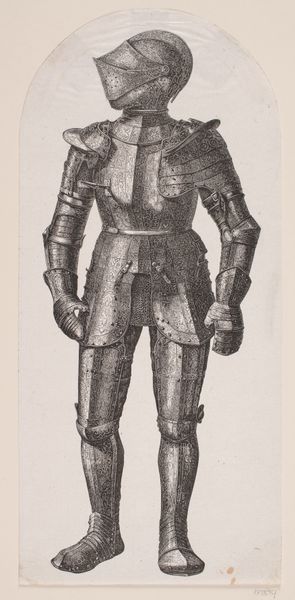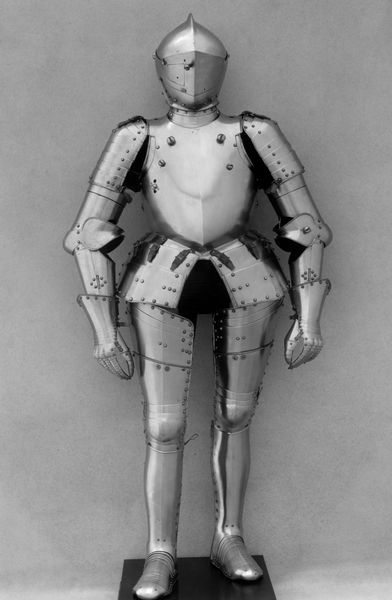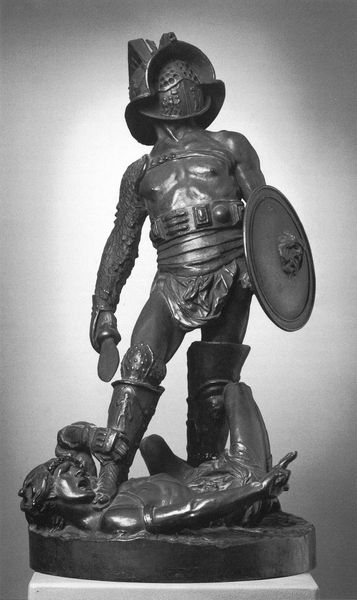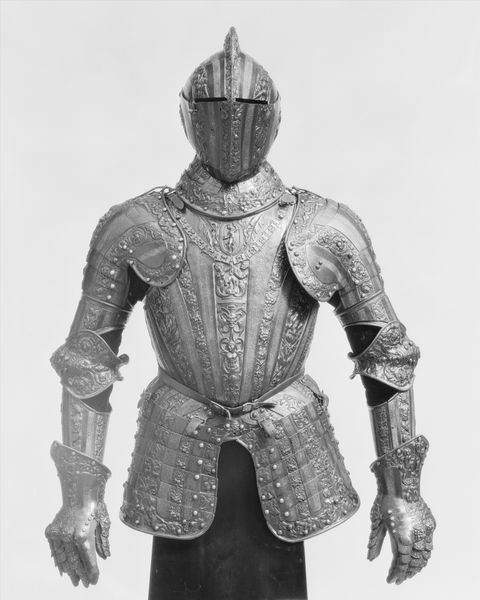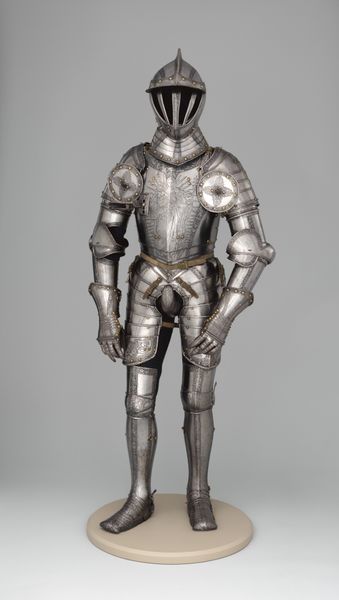
Armor from a Small Garniture for Field and Tournament 1548 - 1900
0:00
0:00
metal, sculpture
#
medieval
#
germany
#
metal
#
sculpture
#
armor
Dimensions: Wt. approx. 56 lb. (25.4 kg)
Copyright: Public Domain
Curator: Here we have a remarkable example of 16th-century craftsmanship: armor from a small garniture designed for both field combat and tournament use. It was likely crafted between 1548 and 1900 by Kunz Lochner, here in Germany, and it now resides at the Metropolitan Museum of Art. Editor: My first thought is just how incredibly *complete* it seems. It has this daunting and solemn aura; ready for battle, reflecting ideals of warfare with these elegant decorative details. Curator: Absolutely, and those "elegant decorative details" speak volumes, don't they? It is more than just protection; it represents power and privilege in a deeply stratified society. Who was commissioned this armor? What societal function did such display serve in the theater of war and tournaments? Editor: The swirling patterns etched on the breastplate certainly have a strong symbolic quality, hinting at lineage and power through nature. Looking at this from the perspective of Jungian psychology, one can almost see an evocation of ancient animistic traditions here, of power channeled through visual emblems that have permeated Western consciousness over generations. The very form suggests strength but almost trapped power within that metallic cage. Curator: That's interesting, but I want to push back on the "trapped power" narrative. This piece needs to be contextualized in terms of contemporary political and military practices of the 16th century, to think about who might wear this suit and what that choice signifies within existing networks of social mobility and gender roles of war. We see an idealized, but very restrictive embodiment of male prowess within an exclusionary power dynamic of European nobility. Editor: Certainly. But I do wonder: Do you think viewers, whether noble or common, would respond solely to explicit historical narratives, or might some unconsciously respond also to pre-existing visual symbolism embedded within their broader culture— irrespective of that conscious awareness? Curator: Both levels absolutely function simultaneously. No visual experience is devoid of context, consciously constructed or historically contingent. The artist's choice to depict specific historical armor does reveal what identity that artwork attempts to reify. And this can reveal, in itself, cultural ideas about beauty or strength tied to gender and warfare during this artwork’s conception. Editor: Yes! Ultimately, the image acts like a cultural mirror reflecting ever more nuanced meanings each time that we encounter it across the ages. Curator: Indeed, the act of preservation of such metalworks also indicates cultural preferences assigned onto certain identities as representative samples to be showcased within art and history museums today. Thank you for engaging. Editor: And thank you for bringing that crucial activist's edge; thinking intersectionally as we look backward is crucial.
Comments
No comments
Be the first to comment and join the conversation on the ultimate creative platform.
